Virginia is home to many snake species. Some of these snakes are either aquatic or semi-aquatic. These snakes will commonly be seen in or near water.
This guide will go over the watersnakes of Virginia as well as the other species you may see while enjoying a day by the water.
1. Northern Cottonmouth
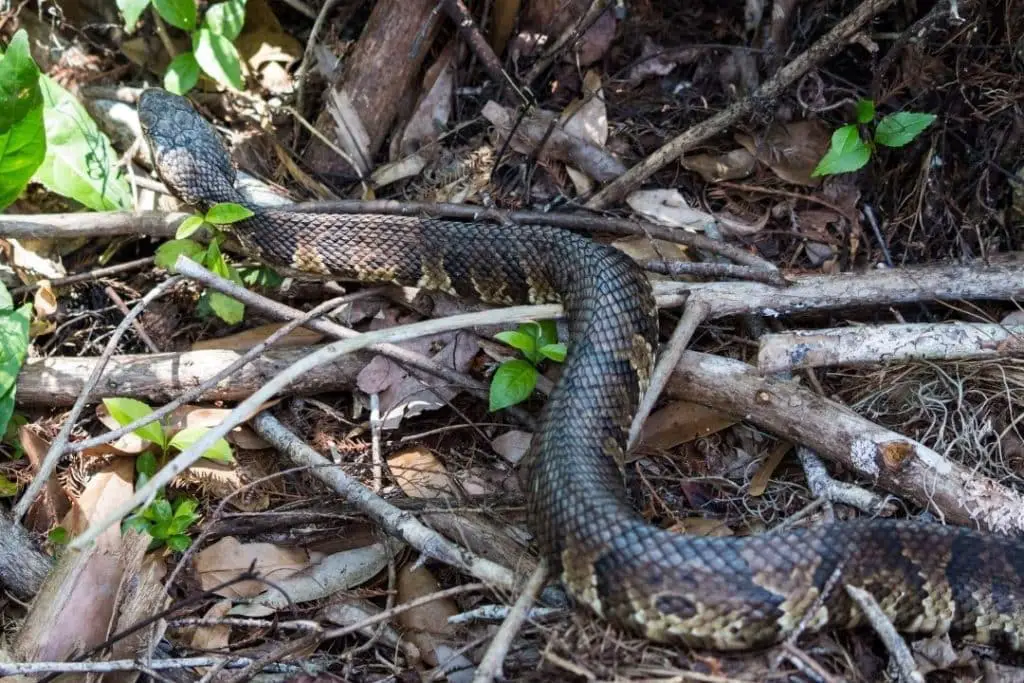
The Northern cottonmouth (Agkistrodon piscivorus) is the only venomous snake you are likely to find near the water. They are found primarily in southeastern virginia.
These snakes eat primarily aquatic prey like fish and turtles, but they will eat nearly anything they can catch like mammals and other snake species.
They are rarely found far from water and may be seen on the shores of bodies of water or in vegetation nearby. Be careful when walking around any body of water since a cottonmouth may be hiding nearby.
These snakes are up to 6 feet long but most will be smaller. They have a large head with a spade shape. Their main color is brown, olive, or black.
They have dark brown crossbands across the body that have a lighter center. The crossbands start lighter near the head and turn to full black by the tail.
Juveniles are similar but their tail is yellow. Cottonmouths have white mouths that they display when threatened.
This gaping behavior is the last warning before the snake tries to bite. If you run across one, back away from the snake so it can flee.
Cottonmouths are not aggressive and prefer to run if confronted. While their bites aren’t likely to be fatal, they are very painful even with treatment and can cause scarring. Often mistaken with the southern water snake and banded water snake.
2. Brown Water snake
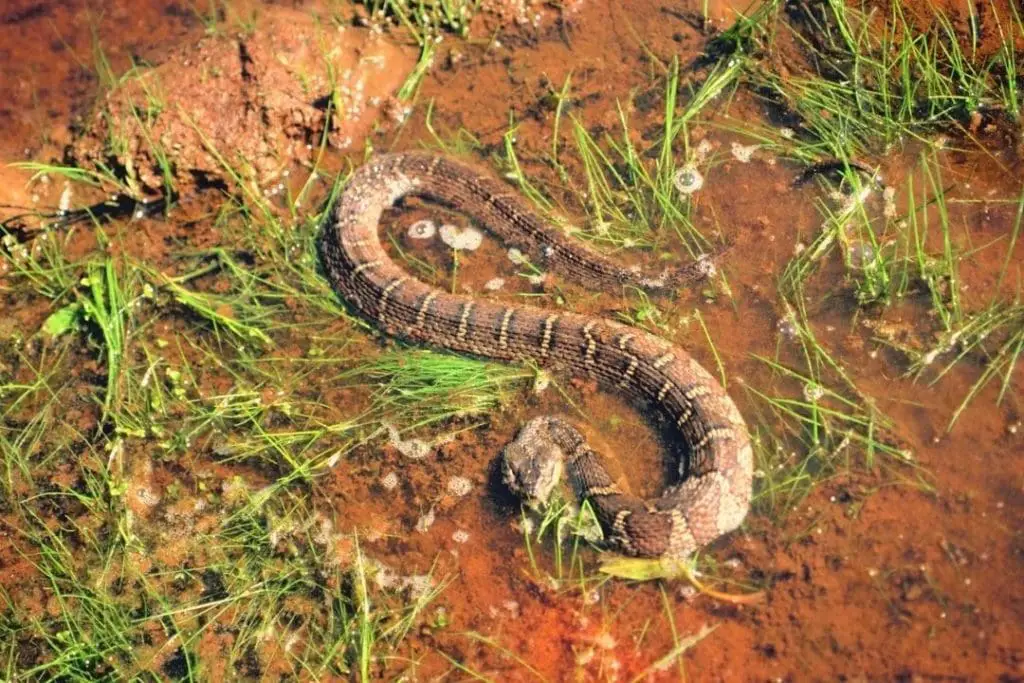
The brown watersnake (Nerodia taxisplota) is easily mixed up with the venomous snakes of the state thanks to its similar coloration. However, these snakes are completely harmless to humans.
They typically eat prey such as amphibians and fish alive.
These snakes are reddish brown with black squares running down their backs. They have large eyes that are placed high on the head and have round pupils. They are normally found near water.
These snakes prefer habitats that include plenty of basking areas such as branches and vines over the water. They frequently climb trees to bask and can be found over 10 feet up a tree.
They tend to pick basking areas over the water and will drop if disturbed. This has led to them sometimes landing in boats and giving people a scare.
They are found in a narrow band in the east and south of the state. Since much of their range coincides with the cottonmouth, they are frequently confused.
Remember, brown water snakes have square markings and are uniformly brown. Cottonmouths have crossbands and black tails.
3. Plain-Bellied Water snake
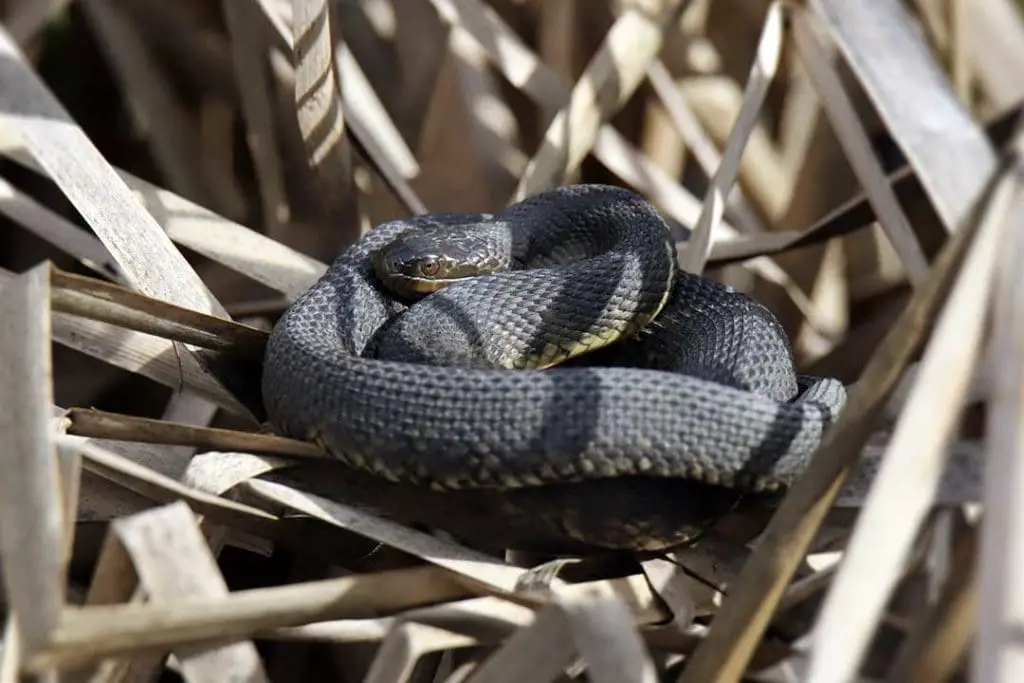
The plain-bellied water snake (Nerodia erythrogaster) are solid colored watersnakes that can be brown with a tint of red, gray, or green.
Some adults have faint crossbars or dorsal blotches. However, most adults are solid in color. Their bellies also lack patterning and tend to be orange to pink in color.
Juveniles are lighter with more intense patterning.
They are typically between 3 and 5 feet long. Plain-bellied watersnakes are found in the southeast of the state.
They prefer a similar habitat to the brown watersnake, with a special focus on temporary bodies of water.
This is because they hunt prey like amphibians and fish. When the water levels drop, the snakes can feed on the higher concentrations of prey.
Prey also has trouble fleeing when the water levels drop. These snakes may hibernate during the winter by using animal burrows.
4. Northern Water snake
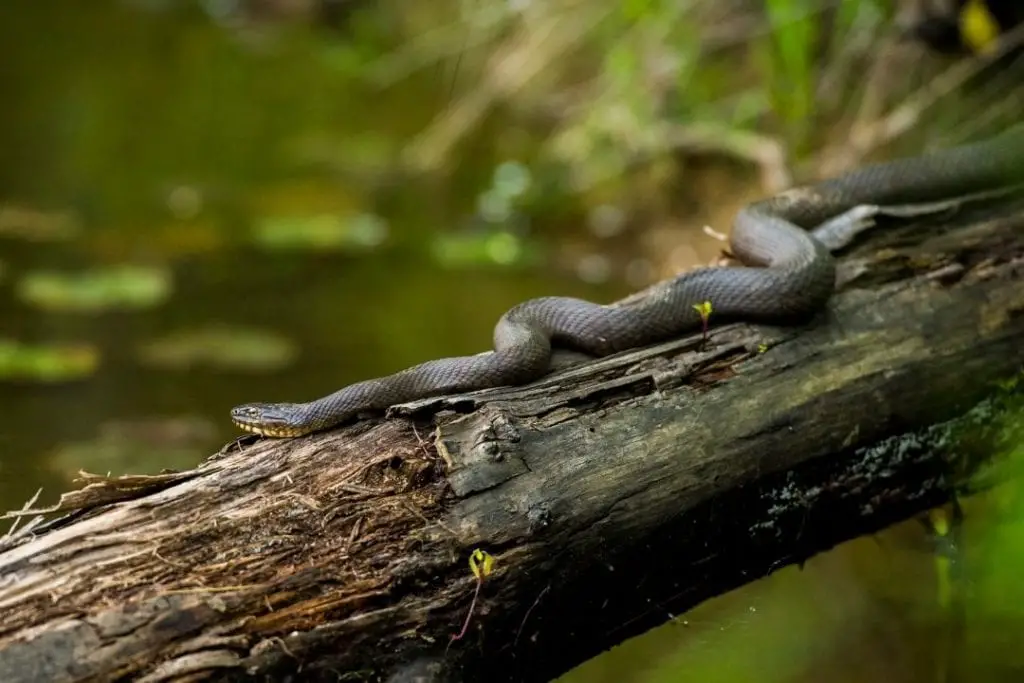
The Northern watersnake (Nerodia sipedon sipedon) can be found nearly everywhere in Virginia.
They tend to be 2-4 feet long. They are brown, tan, or gray with squarish blotches that can join to form crossbands. They have large heads and eyes with round pupils. They are rarely found far from water.
They tend to prefer habitats with plenty of spaces to bask. If they are not hunting, northern watersnakes typically rest under rocks, logs, and similar cover.
These are active predators of amphibians, fish, and nearly anything else they can overpower. Since they consume prey alive, they primarily eat prey that can’t fight back. They are not venomous or otherwise dangerous to humans.
5. Queen Snake

The queensnake (Regina septimvittata) is found over most of the state aside from the east, south, and southeast. They stay between 15 and 24 inches long as adults.
They are typically found near rocky rivers and streams that contain the crayfish they eat.
They are typically olive to brown with yellow bands running down the sides of the animal. They have bright yellow bellies with 4 brown stripes that converge at the tail.
They are diurnal snakes that will rest on logs near the water to bask.
They eat primarily freshly molted crayfish, but they will also eat fish and tadpoles if crayfish without a shell is unavailable.
They heavily prefer to avoid eating shells. These snakes are very rarely sighted from water since they dehydrate very easily. They are nonvenomous and consume prey whole.
6. Northern Glossy Swamp Snake / Crayfish Snake
The Northern glossy swampsnake (Liodytes rigida rigida – virginia herpetological society) is found in a very limited area in Virginia. They have only been collected in New Kent County.
These are semi aquatic snake small snakes that stay under 30 inches long with most adults being 12-24 inches long. They are brown with very thin stripes on the midline of the body.
They have cream bellies with two rows of half-moon shapes. They prefer marshes, swamps, and other wet habitats.
They eat crayfish as their primary prey but have been known to eat incest larvae, fish, and amphibians. They are extremely rare and any sightings should be reported.
These snakes may be endangered in the state. Since they have only ever been found in one area, they are very rare. The last specimen from Virginia was collected in 1991 after 40 years of no reported sightings.
7. Common Rainbow Snake
The common rainbow snake (Farancia erythrogramma erythrogramma) is a colubrid snake found in eastern Virginia. They are between 27 and 48 inches long as adults.
They have a dark back with red stripes going down the length of the body. The belly is yellow with rows of black spots.
They are highly aquatic and are typically found near streams, rivers, swamps, and open marshes. They may venture out and can be found in sandy soil that they burrow into.
Young snakes may be found hiding under debris. Juveniles eat fish, earthworms, and amphibians. Adults eat only eels. They will catch prey in the water, hold it in their mouths, and climb onto land to swallow it.
Not much is known about the species. They are not considered threatened at the time of writing, but habitat destruction puts the species at risk.
Conclusion
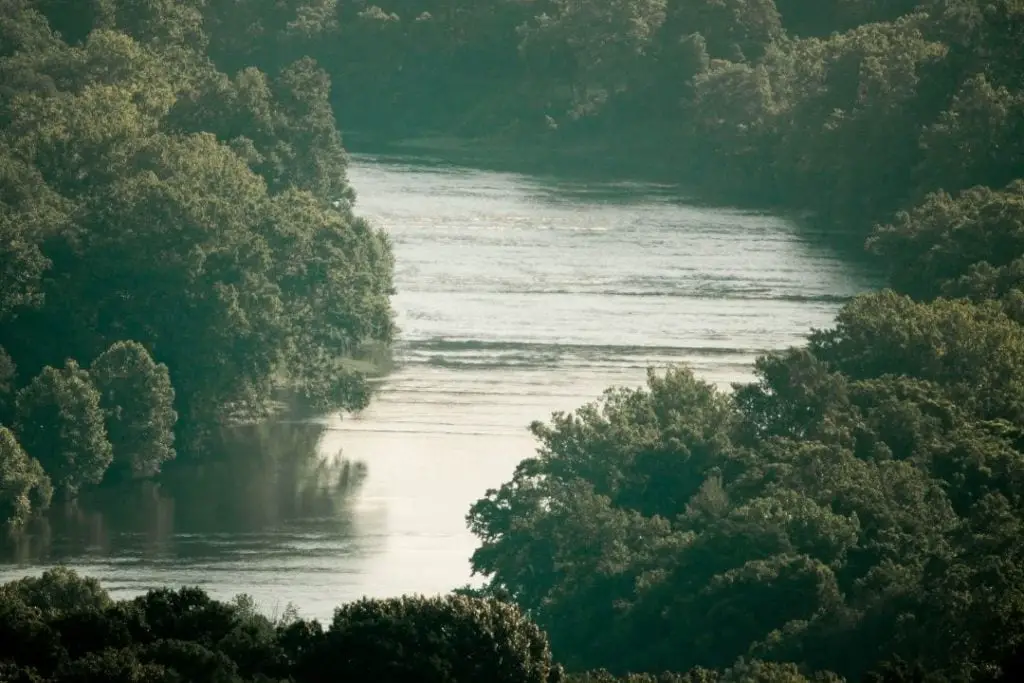
We hope this taught you about the snakes you can find on the water in Virginia.
If you have seen any of these snakes in the wild, we would love to hear about them. If you have any other questions or comments, please leave them below.
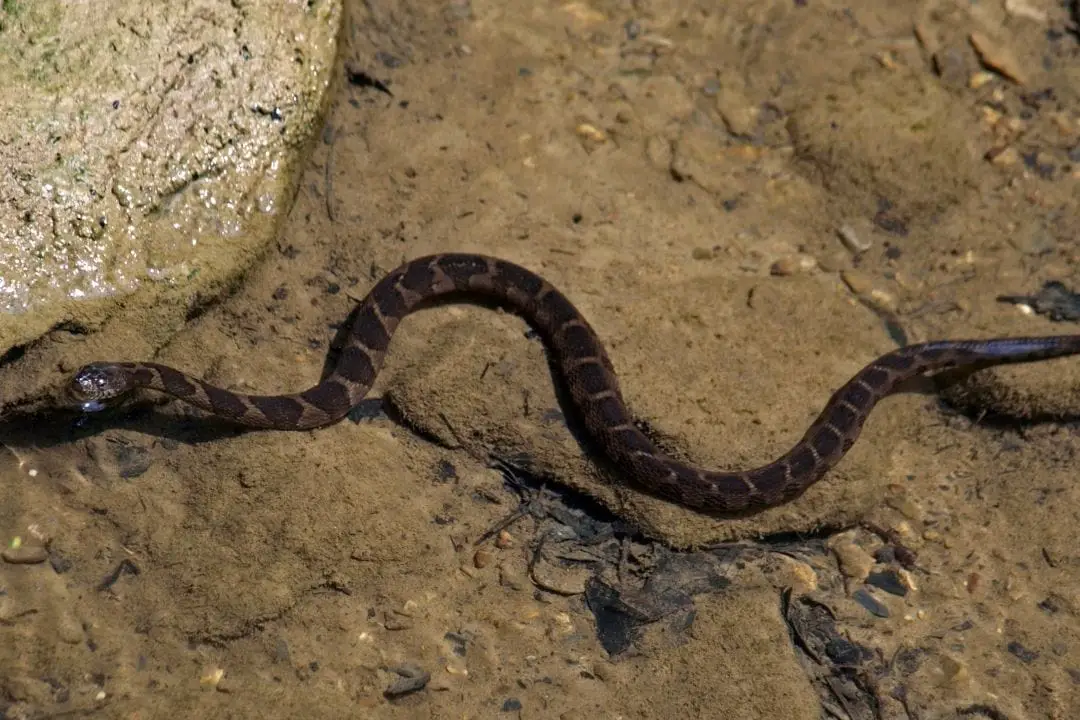
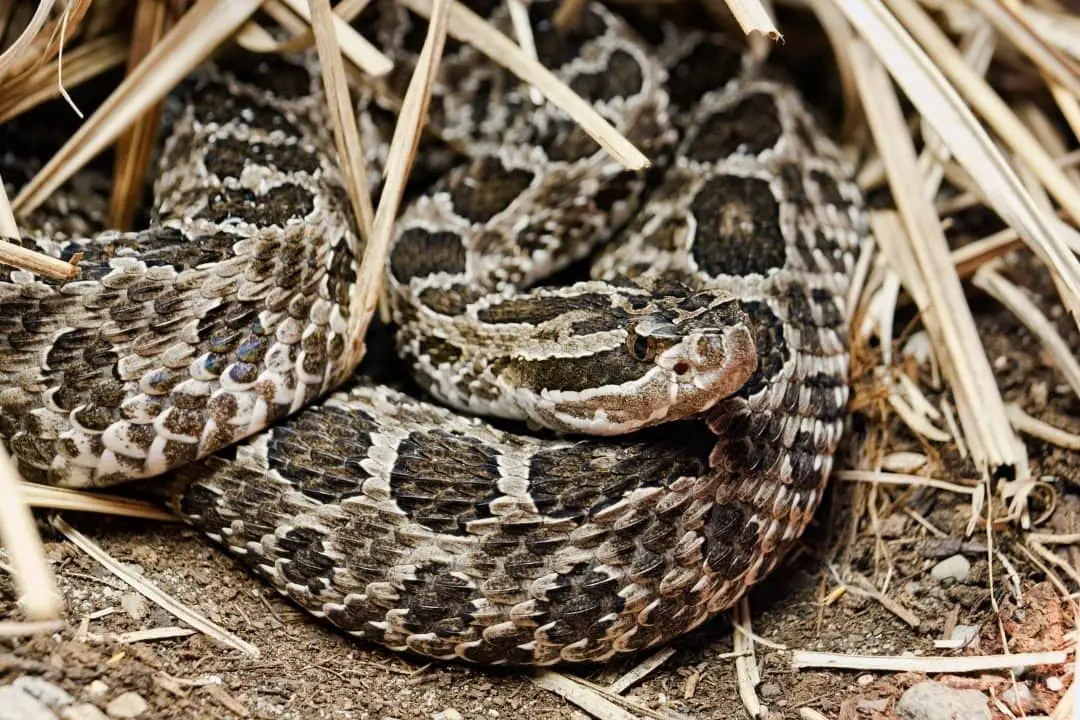
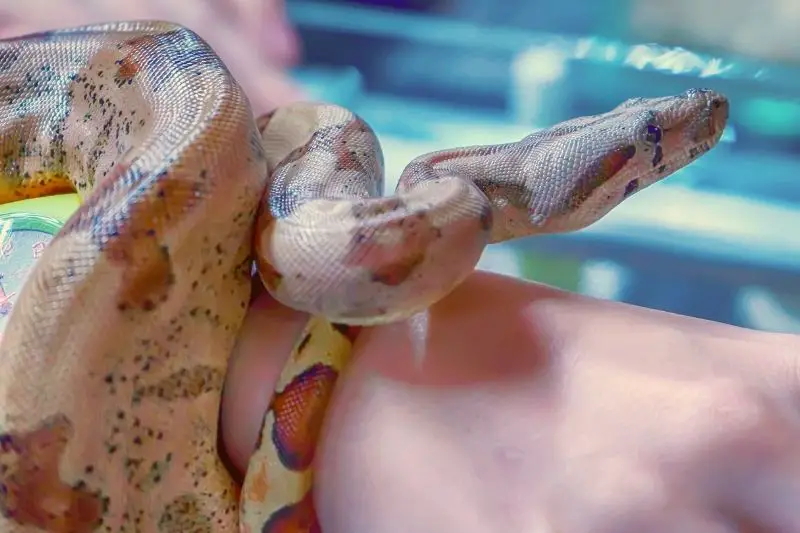
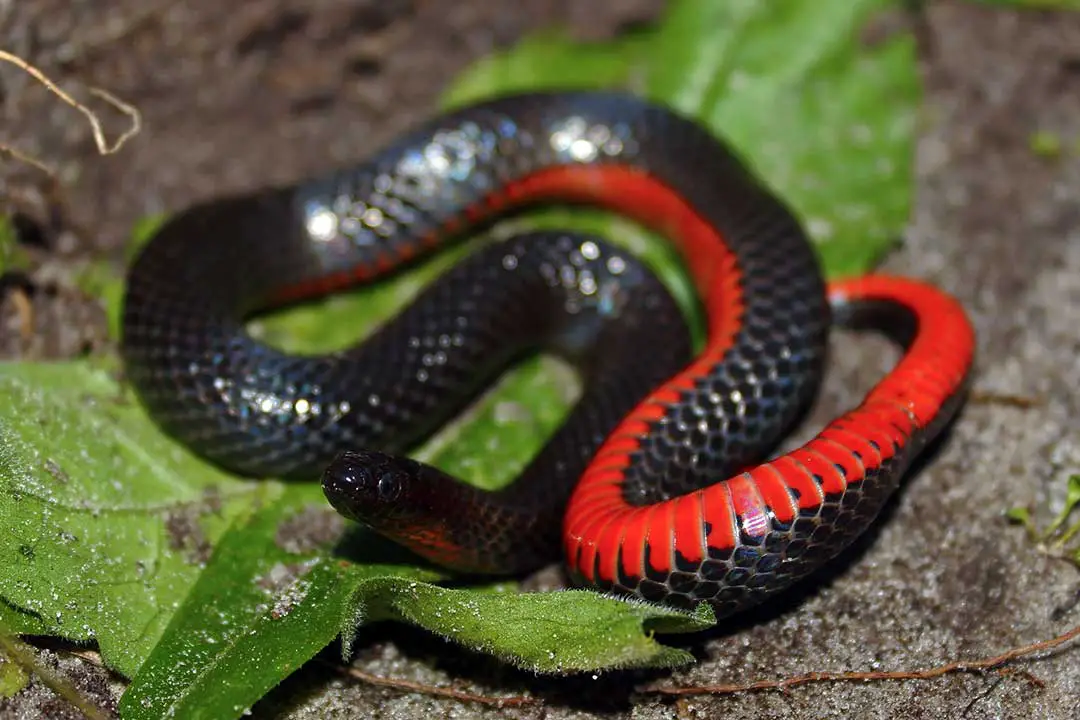

Hi, I have a couple koi ponds, one with fish ranging from about 3-8 inches long, and yesterday saw water snake( #2 in your list) in that pond. there are also frogs, tadpoles, misc dragonflies etc, but without certainty it appears my koi population is decreasing. I had a snake similar to this one preying on fish in smaller ponds a couple years ago that got tangled in some chicken wire and died, but not before he wiped out lots of goldfish/ What can I do to keep these snakes away from my pond or capture them to stop the predation. This present guy looked possibly 2-3 feet long, any suggestions?
Repelling future snakes would be great also if you know any ways to make the pond less attractive. Would getting in the pond and being a bigger predator possibly make him think twice?